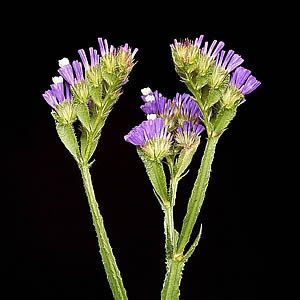The statice (Limonium sinuatum) is a herbaceous and highly floriferous plant native to the Mediterranean region, which includes Southern Europe, North Africa, and some Middle Eastern countries, where it grows spontaneously in sandy hills. Although it is treated as an annual plant in practice, it is actually a short-lived perennial. It has rosette-arranged, basal, lanceolate, pinnate leaves with large lobes on each side, covered in rough pubescence.
The inflorescences appear in summer, consisting of terminal, erect panicles of spikelets, rising above the foliage and supported by winged stems. The densely arranged flowers feature a funnel-shaped, papery, and persistent calyx in vibrant colors, including yellow, coral, blue, or pink, depending on the variety, and a delicate light-colored corolla, which can be white, pink, or yellow.
A real surprise! While growing, the statice is not a particularly attractive plant. Some say it resembles weeds, having the appearance of a weed. However, during its long blooming period, it brings a spectacle of flowers to the garden. For this reason, its use is recommended for mass plantings and borders, mixed with other species in a more free and informal style, as in cottage or English-style gardens.
The statice also fits well in rocky, arid, and Mediterranean-inspired gardens. What made this little notable so famous worldwide was the fact that its flowers remain beautiful and colorful, even after drying, whether in the garden or harvested for durable floral arrangements. If properly dehydrated in the shade and kept away from direct sunlight, its flowers will hardly fade. They can also be used as fresh cut flowers.

It should be cultivated in full sun, preferably in sandy, well-drained soils, enriched with organic matter and irrigated regularly without waterlogging. Once well established, it is tolerant of short drought periods. It enjoys the warm, sunny climate of the coast and is not bothered by the soil’s salinity in these regions. It does not withstand frost. During flowering, it benefits from supplemental fertilization, diluted in the irrigation water, rich in phosphorus and potassium.
The statice has a single and long flowering period, so it is not necessary to remove the flowers for it to bloom again. It propagates easily by seeds, which should be sown, covered, in a mix of sand and organic soil, kept moist. The ideal planting time is in spring, after the last frost, or in autumn, if a greenhouse is available. It germinates in 7 to 14 days. Darkness favors germination. Transplant when the seedlings have two true leaves. Plant in the garden only in spring, when it is free of frost.


